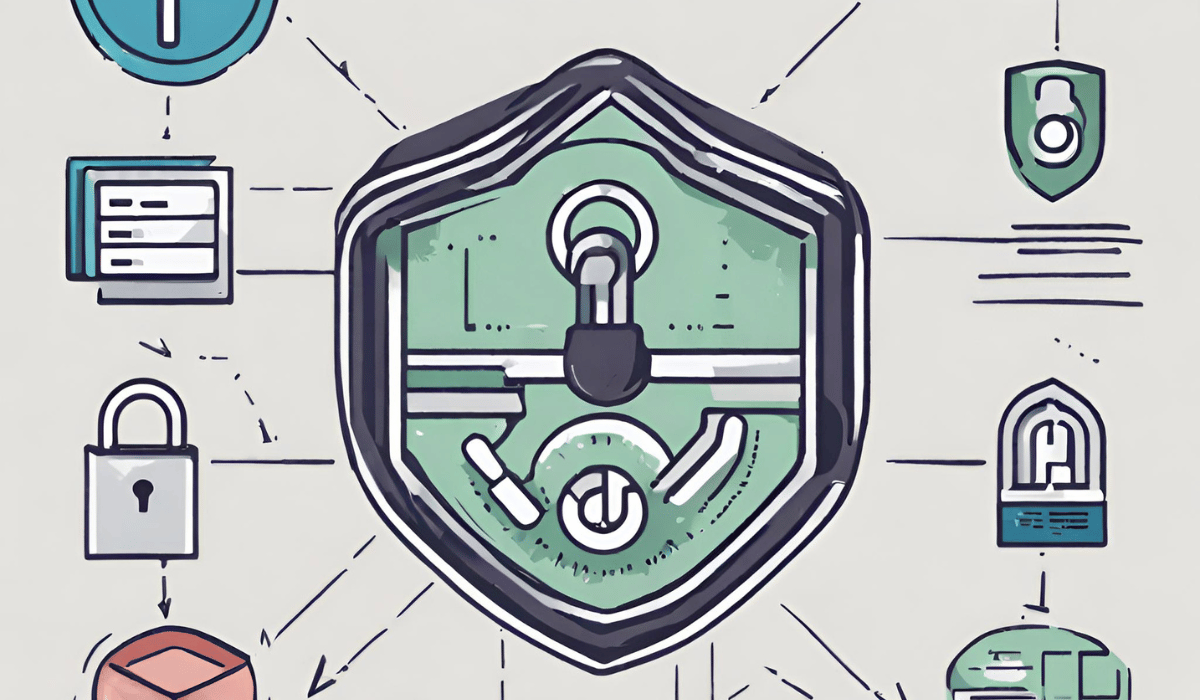Definition of Data at Rest
Data at rest refers to data that is stored or saved in a storage device, such as a hard drive, flash drive, or cloud storage and is not actively being accessed or transferred. This data is typically in a static state and is not being modified or processed. Examples of data at rest include files, documents, images, and databases that are stored on a computer or server. It is important to secure data at rest to prevent unauthorized access, theft, or loss of sensitive information.
Why Encrypting Data at Rest is Important?

Encrypting data at rest is important because it provides an additional layer of security to protect sensitive information from unauthorized access. Encryption transforms the data into an unreadable format that can only be accessed with a decryption key. This makes it more difficult for hackers or malicious actors to steal or access the data, even if they manage to gain access to the storage device or server where it is stored. Additionally, encrypting data at rest can help organizations comply with data protection regulations and prevent costly data breaches.
Encryption Algorithms
Encryption algorithms are the mathematical formulas used to encrypt and decrypt data. There are several types of encryption algorithms, including symmetric encryption, asymmetric encryption, and hashing algorithms. Symmetric encryption uses a single key to both encrypt and decrypt data. This means that anyone who has the key can access the data. While symmetric encryption is fast and efficient, it can be less secure than other methods if the key is compromised.
AES (Advanced Encryption Standard)
AES (Advanced Encryption Standard) is a widely used symmetric encryption algorithm. It was developed by the National Institute of Standards and Technology (NIST) in 2001 and has since become the industry standard for data encryption. AES uses a block cipher, which means that it encrypts data in fixed-size blocks. The size of the block can vary, but the most common sizes are 128, 192, and 256 bits.
AES uses a series of mathematical operations to transform plaintext into ciphertext. The process involves multiple rounds of substitution, permutation, and mixing of data. The number of rounds depends on the key size, with 10 rounds for 128-bit keys, 12 rounds for 192-bit keys, and 14 rounds for 256-bit keys. During encryption, the plaintext is divided into blocks and each block is processed separately.
Strengths And Weaknesses
The strengths of AES lie in its high level of security and efficiency in encryption. It is widely used in various applications such as online transactions, email encryption, and secure communication protocols. The use of multiple rounds of substitution, permutation, and mixing makes it difficult for attackers to decipher the encrypted data without the key. However, one weakness of AES is the potential for side-channel attacks, where an attacker can gain access to information through indirect means such as power consumption or electromagnetic radiation.
RSA (Rivest–Shamir–Adleman)
RSA is a widely used public-key encryption algorithm that is named after its inventors: Ron Rivest, Adi Shamir, and Leonard Adleman. It is based on the mathematical properties of prime numbers and is commonly used for secure data transmission, digital signatures, and key exchange.RSA works by generating a public key and a private key. The public key is used to encrypt data, while the private key is used to decrypt it.
How It Works?

RSA encryption works by using two large prime numbers, p and q, to generate a public key and a private key. The public key consists of the product of these two prime numbers, while the private key consists of the two prime numbers themselves. To encrypt a message, the sender uses the recipient’s public key to transform the message into an unintelligible form. The recipient can then use their private key to decrypt the message and read it.
The security of RSA encryption is based on the fact that it is very difficult to factor the product of two large prime numbers. This means that it is difficult for an attacker to determine the private key from the public key, making it a secure way to transmit sensitive information.
Strengths And Weaknesses
RSA encryption has several strengths, including its high level of security, its ability to encrypt and decrypt messages quickly, and its widespread use in various applications and industries. It is also relatively easy to implement and use. However, RSA encryption also has some weaknesses. One of the main weaknesses is the potential for attacks based on the factoring of large prime numbers. As computing power continues to increase, it may become easier for attackers to factor in large numbers and break RSA encryption.
Implementing Data Encryption
- Full disk encryption
- File and folder encryption
- Database encryption
- Cloud storage encryption
- Email encryption
Risks of Not Encrypting Data at Rest
- Data breaches and hacking
- Financial losses
- Reputational damage
Best Practices for Data Encryption
- Use strong encryption algorithms
- Secure key management
- Regularly update encryption protocols
- Conduct regular security audits
Conclusion
Data encryption is a crucial aspect of data security. It protects sensitive information from unauthorized access, breaches, and hacking. Implementing encryption methods such as full disk encryption, file and folder encryption, database encryption, cloud storage encryption, and email encryption can help keep data safe. Not encrypting data at rest can lead to financial losses, reputational damage, and data breaches. To ensure the effectiveness of encryption, it is important to use strong encryption algorithms, secure key management, and regularly update encryption protocols.
FAQs
What is the difference between data in motion and data at rest?

Data in motion refers to data that is actively being transferred between devices or networks, such as emails, instant messages, or file transfers. Data at rest, on the other hand, refers to data that is stored on a device or network, such as files, databases, or backups.
How does data encryption at rest differ from data encryption in transit?
Data encryption at rest and data encryption in transit both involve the use of encryption to protect data, but they differ in when and how the encryption is applied. Data encryption at rest involves encrypting data that is stored on a device or network, such as files, databases, or backups. This encryption is typically applied when the data is written to the storage medium, and it remains encrypted until it is accessed and decrypted by an authorized user or application.
How does data encryption affect system performance?
Data encryption can have an impact on system performance, as the process of encrypting and decrypting data requires additional processing power and resources. The impact on performance will depend on factors such as the strength of the encryption algorithm, the size of the data being encrypted, and the processing power of the device or network. However, modern encryption algorithms are designed to minimize the impact on performance, and the benefits of data protection often outweigh the slight decrease in system performance.
Can encrypted data be hacked or accessed?
While it is possible for encrypted data to be hacked or accessed, it is extremely difficult to do so without the proper decryption key. Encryption algorithms are designed to make it nearly impossible for unauthorized parties to access or decipher the encrypted data. However, it is important to note that the strength of the encryption algorithm and the security of the decryption key are critical factors in determining the level of protection provided by encryption.
Can encrypted data be recovered if the key is lost?
If the decryption key is lost or forgotten, it can be extremely difficult or even impossible to recover the encrypted data. This is because the encryption algorithm is designed to make it difficult for anyone, including the rightful owner of the data, to access the encrypted data without the key. Therefore, it is important to keep the decryption key safe and secure to ensure that the encrypted data can be accessed when needed.
